
You know that veggie gardener who is overwhelmed with massive quantities of tomatoes throughout the summer?
Their hands are slightly stained. Not only do they smell delicious, like an old favorite Italian restaurant, but they also are weary from canning massive quantities of yummy tomatoes.

By the same token, they have a gleam in their eyes and a glow to their skin to match their happy smiles.
How do they do it? They know these secrets! And now you do too!
Tip #1: Choose the Best High Yielding Tomato Varieties
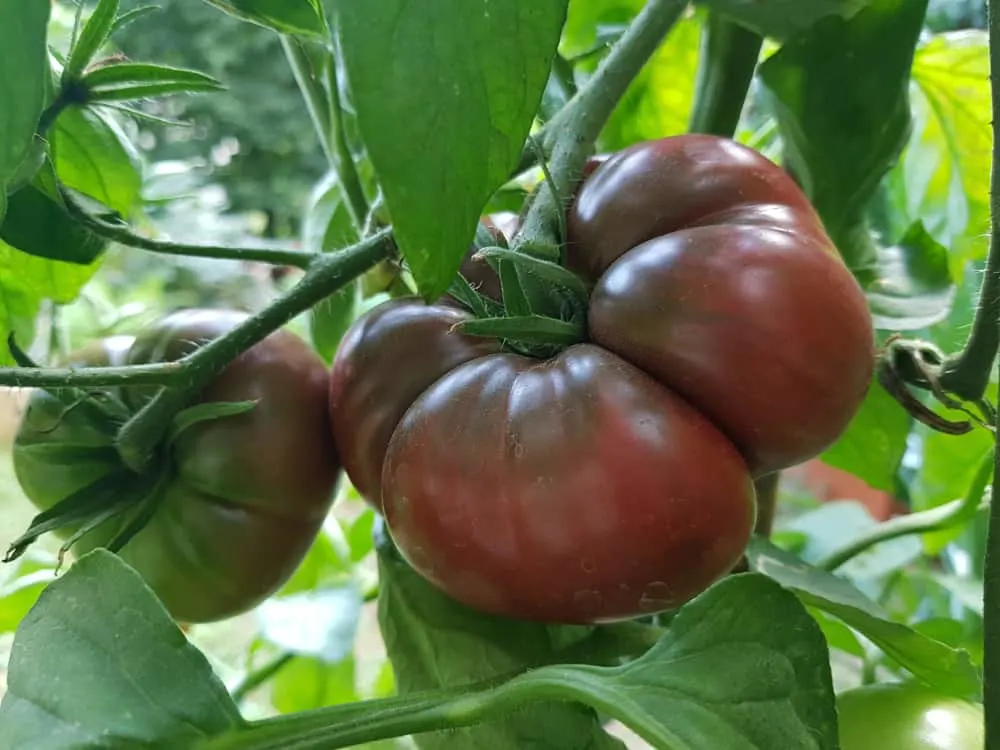
It is exciting times in the realm of tomato growing. Not too long ago, you might have needed to sacrifice yield for flavor. Not anymore!
Tomato breeders have been working tirelessly to mix tomatoes with incredible flavors with tomatoes with exceptional yields.
Significantly, many tomato varieties will expel their high-yield virtue in the plant’s description. Not only that, but a simple recipe to follow may be to choose varieties with a long harvesting season, short days to maturity, and vining or indeterminate growth habit. In this way, you may create a potentially high-yielding tomato situation.
High yielding tomato varieties include: Stupice, Black Krim, Sungold, Big Beef, Celebrity
Tip #2: Plant Tomatoes in the Sunniest Spots Available
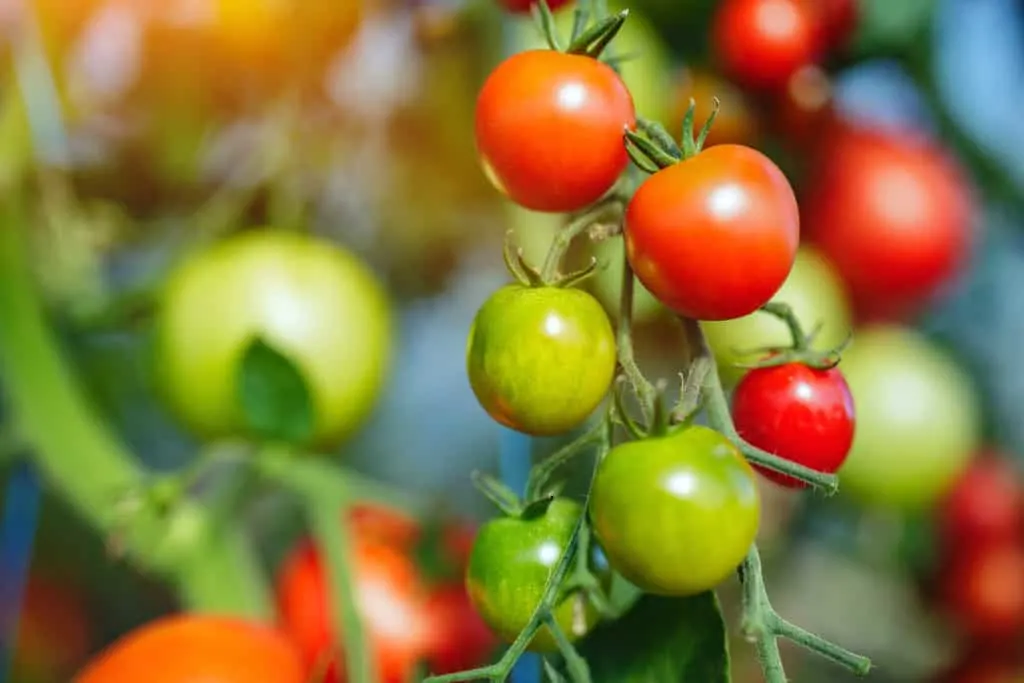
Importantly, tomatoes must have as much direct sunlight as possible for the highest potential yield.
Bring on the heat for your tomato plants! Tomatoes are more productive in the sun. Moreover, tomato plants will produce more flowers and ripen sooner in sunny locations.
To emphasize this point, weather may have a significant impact on the tomato yields. We in North America are expecting a warmer than normal summer, according to the Old Farmer’s Almanac. On the positive side, this is great news for tomato growers.
Tip #3: Feed Your Tomatoes
Begin with an outstanding growing medium.
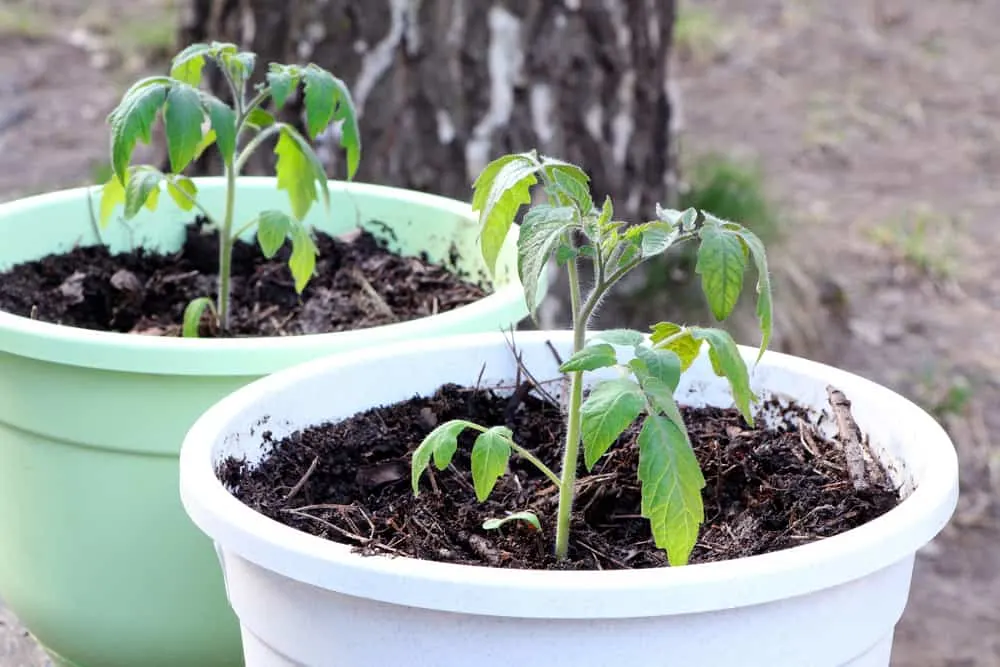
Tomatoes love a rich, humus soil which is full of nutrients. Begin with outstanding, healthy soil. To put it another way, your soil should be able to hold moisture and nutrients. Soil can be amended with compost and worm castings to increase its overall available nutrients.
Roots and Bloom Food – Phosphorus
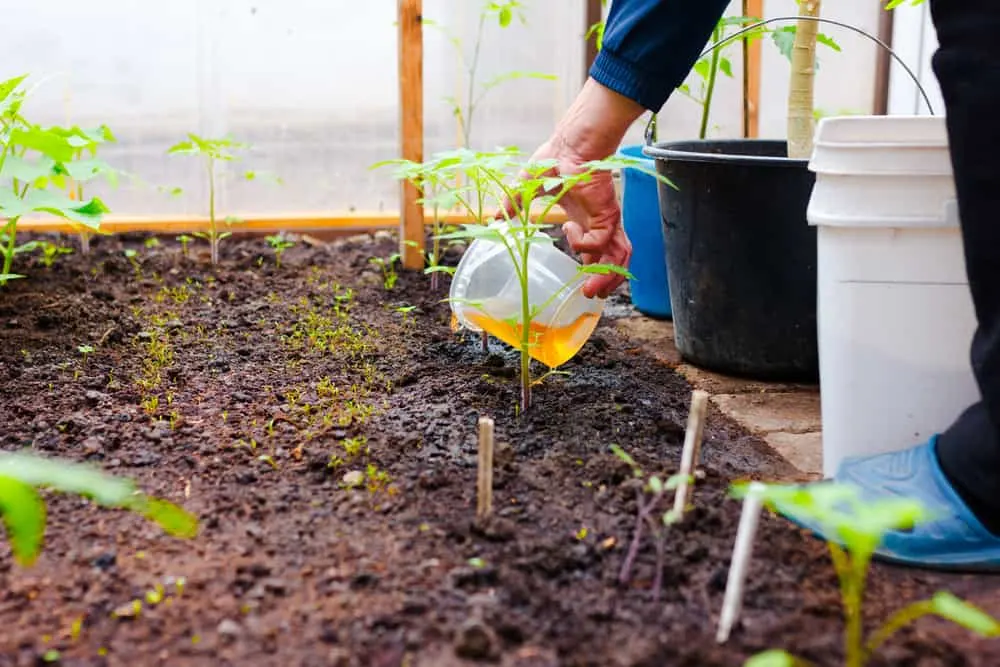
Phosphorus is the key macronutrient for roots and blooms. Blooms, of course, equal fruit, so phosphorus is vitally important for fruit set.
In the NPK (Nitrogen, Phosphorus, Potassium) ratio, phosphorus is the middle number.
Nitrogen is for green leafy growth. Phosphorus is for roots and blooms. Potassium is for strength. Both nitrogen and potassium are important for healthy growth and vigor, but phosphorus is indispensable for fruit yield.
Phosphorus is also a little different. Roots need to be in contact with phosphorus-containing materials. Therefore, it is important to ensure your plants have access to phosphorus.
Excellent sources of phosphorus are bone meal and ground rock phosphate. These are acceptable for organic gardening practices as well.
Phosphorus-containing materials like these can be amended right in your planting hole. Additionally, they can also gently be cultivated into the soil around your plant once or twice early in the season as your plants begin to produce flowers in earnest.
Foliar Spray
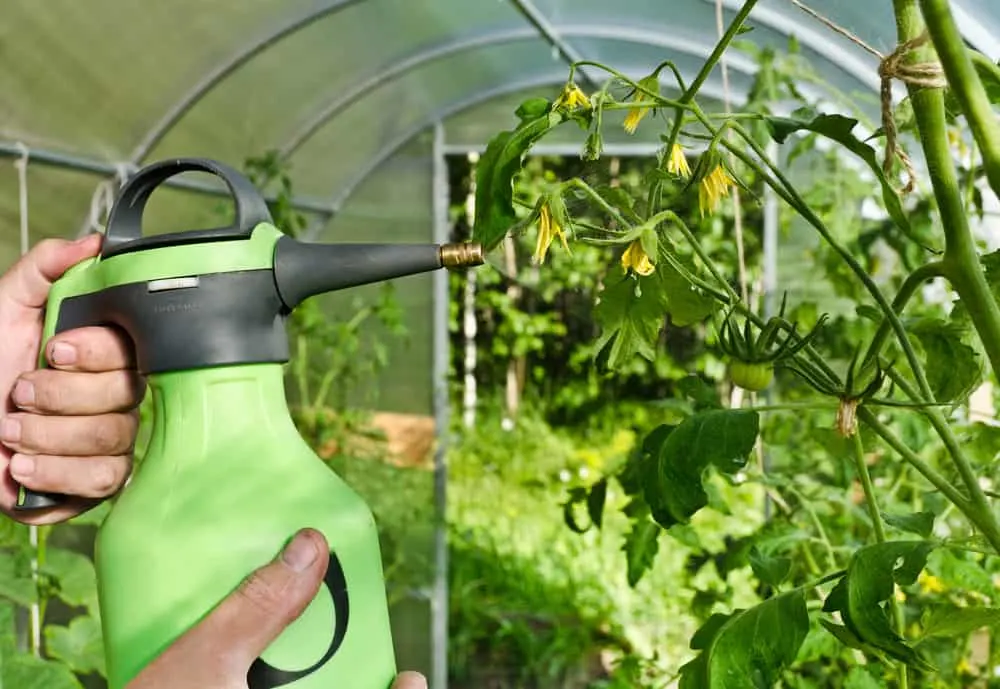
Foliar sprays are a wonderful way to ensure your tomato plants have access to the many micronutrients that help produce great nutritious fruit. Importantly, look for sprays that are natural and organic. This way, there are no synthetic chemical fertilizers left on your edible fruit.
Your own compost tea may be a great choice as well. However, make sure the compost is extremely well rotted. Additionally, ensure your compost tea is well diluted. Specifically, this will ensure balanced nutrition that will not burn your plants with excess nutrients.
For more on fertilizing your tomato plants, check out our article: How to Fertilize Tomato Plants for Your Best Harvest Ever.
Tip #4: Help Pollinate Tomato Flowers to Increase Fruit Set – Three Ways
Shake your tomato flowers!
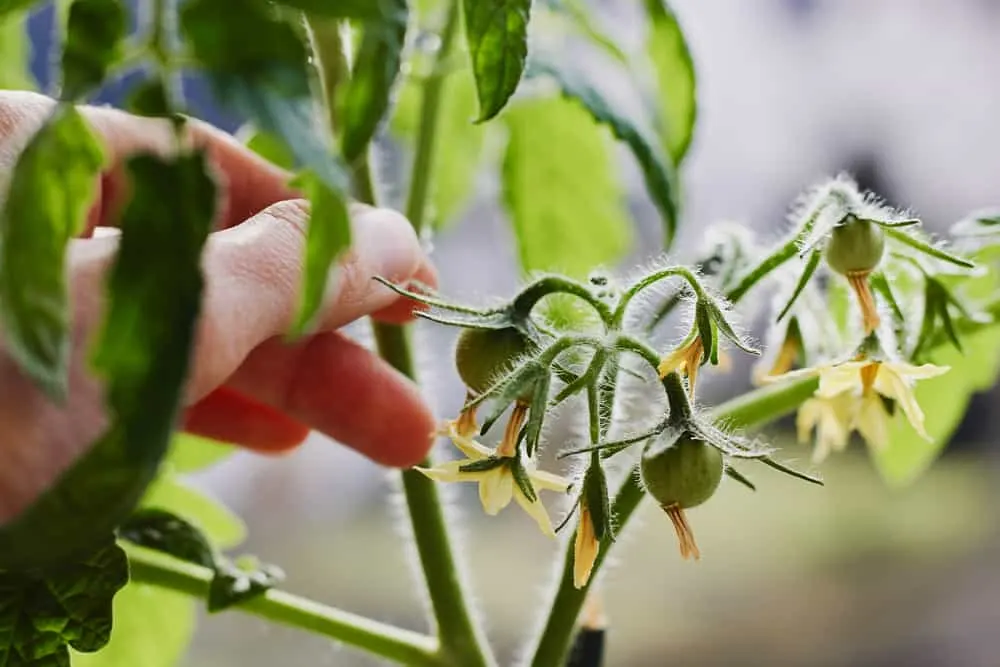
It feels a little silly at first. Indeed, shaking your tomato flowers helps to pollinate them.
Impressively, tomato flowers are self-pollinating. That is to say that each flower holds the male and female parts. Give your tomato flowers a head start to set fruit by shaking your tomato flowers.
Encourage Pollinators
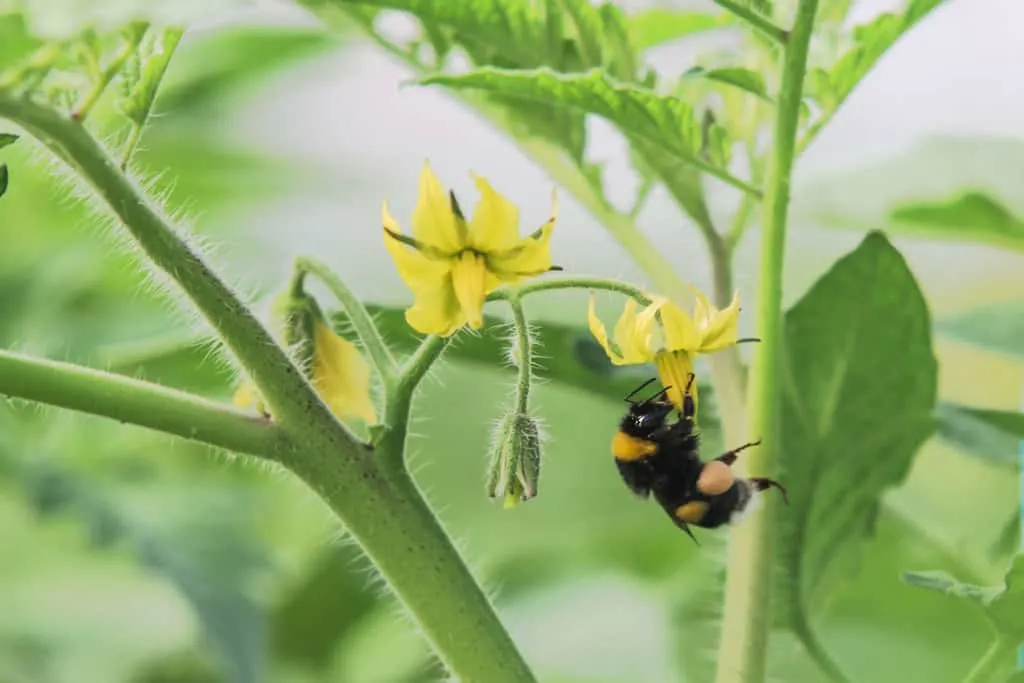
There is no replacement for pollinating insects!
Bees, of course, are among the most important to encourage. Prominently, there are many beneficial insects in the garden that help our plants in a myriad of ways. Pollination is just the beginning. Accordingly, pollination is the primary essential ingredient for flowers to become fruit!
Significantly, companion planting is one way to encourage pollinating insects to the tomato garden.
For more information about encouraging pollinating insects through companion planting, check out our articles: 5 Reasons to Plant Marigolds With Your Tomato Plants, and 8 Best Tomato Companion Plants – To Increase Yield & Reduce Pests.
Avoid the use of Pesticides
Nuisance pests can be a downfall in the garden. On the other hand, sometimes the cure is worse than the disease. The use of pesticides not only can harm some of the beneficial insects we want and need to encourage in the garden, but they also can damage the healthful attributes in the tomatoes we hope to eat.
Interestingly, there are many safe options to use for pest control. The first step is to correctly identify the pest you need to control. Secondly, find safe alternatives to controlling the pest. In this way, you can avoid the use of harmful pesticides which may do more harm than good.
Related Reading: 4 Ways To Get More Tomato Flowers To Set Fruit
Tip #5: Know When and How to Prune Tomato Plants
Tomatoes love to generate lots of vegetative growth. In their historic natural habitat, tomatoes grow in tropical climates and can live out long lives.
The varieties we grow today in the garden would love nothing more than to stretch out along the ground, making lots of branches and leaves. However, we want them to produce fruit. To counteract this tendency, we need to train them to make fruit instead!
Two Kinds Of Tomatoes, Two General Pruning Rules
Determinate Tomatoes, AKA Bush Types
In general, determinate tomatoes do not require much pruning. To clarify, determinate tomatoes grow to a determined size. By the same token, they generally produce a determined amount of fruit. Pruning these kinds of tomatoes may limit the potential yield of the tomato plant.
As such, pruning determinate tomato plants is not recommended. Of course, the removal of dead or damaged leaves won’t hurt.
Indeterminate Tomatoes, AKA Vine Types
In contrast, indeterminate tomatoes have an almost limitless growth habit. Each branch node has the capability to produce a new branch.
Limiting each plant to 2 to 5 main stems will help to convince the plant to grow abundant fruit. Moreover, continuously removing new suckers as they appear at the leaf nodes will reduce vegetative growth. Markedly, this improves each plant’s fruit production and yield.
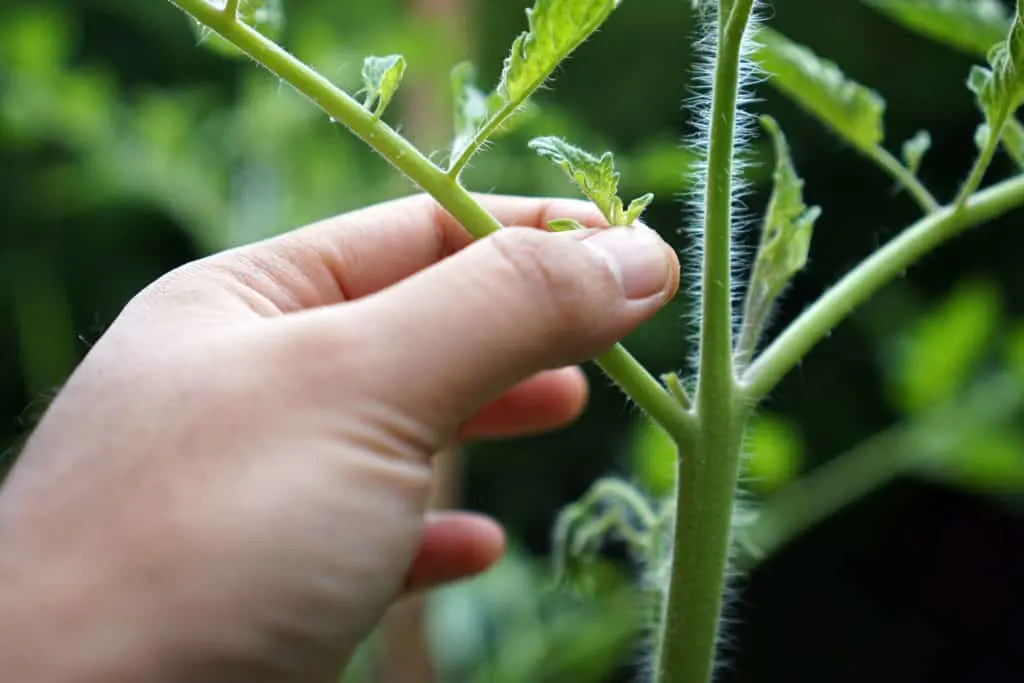
Tip #6: Support Your Tomato Plants
Throughout the tomato growing literature, there is evidence to support supporting your tomatoes!
This is particularly important in terms of generating higher yields. Notably, this depends on the style of growing and the type of tomatoes you grow. Additionally, this will determine the support technique you use. Some bush or determinate tomatoes can be staked or grown in cages. On the other hand, some vine or indeterminate tomato plants may need strong supports such as wire fencing.
Our article, Staking vs Caging Tomato Plants – Which Is Better will help you with all of your tomato support needs.
Tip #7: Pick Early. Pick Often
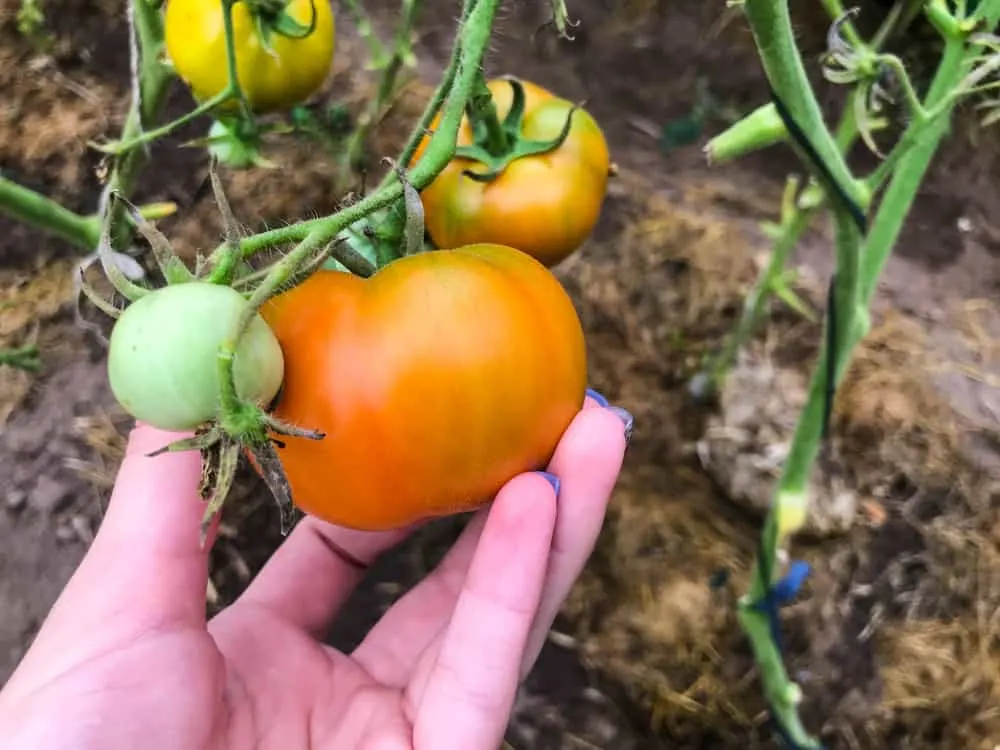
I confess, this is one I often neglect. I pick often, sure. But I might wait too long at the beginning of the season to start picking. This is because I want to pick that fully sun ripened fruit warm off the vine to kick off the harvest.
This is a mistake!
Want to convince your tomato plant to make lots of fruit? Start by picking that first tomato or two as soon as it has formed. Surprisingly, some growers go so far as to pick off the first entire cluster of flowers! Interestingly, this acts as a signal to the tomato plant to get productive!
With this in mind, pick tomatoes when they have their first blush of color. This is instead of waiting until they are fully ripe on the vine.
Significantly, if the harvested tomatoes stay at room temperature, they will retain excellent flavor as they ripen in a sunny window, for example.
In this way, you are protecting the harvest from any bird or insect damage as well. It is most important to note, do not put tomatoes in the fridge! Sadly, this sacrifices flavor terribly.
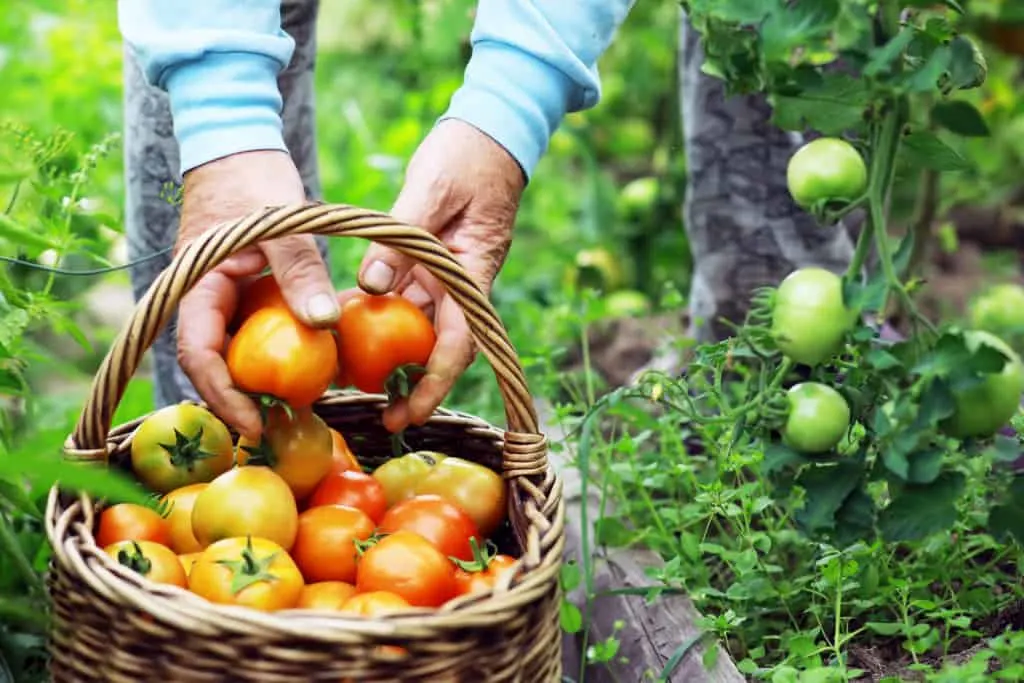
The Final Take Away
Follow these seven tips to get more tomatoes from each plant.
To recap, plant high-yielding varieties, plant them in full sun, feed them well, encourage pollination, prune them, support them, and finally, pick early and often. You will have lots and lots of juicy, yummy tomatoes!
